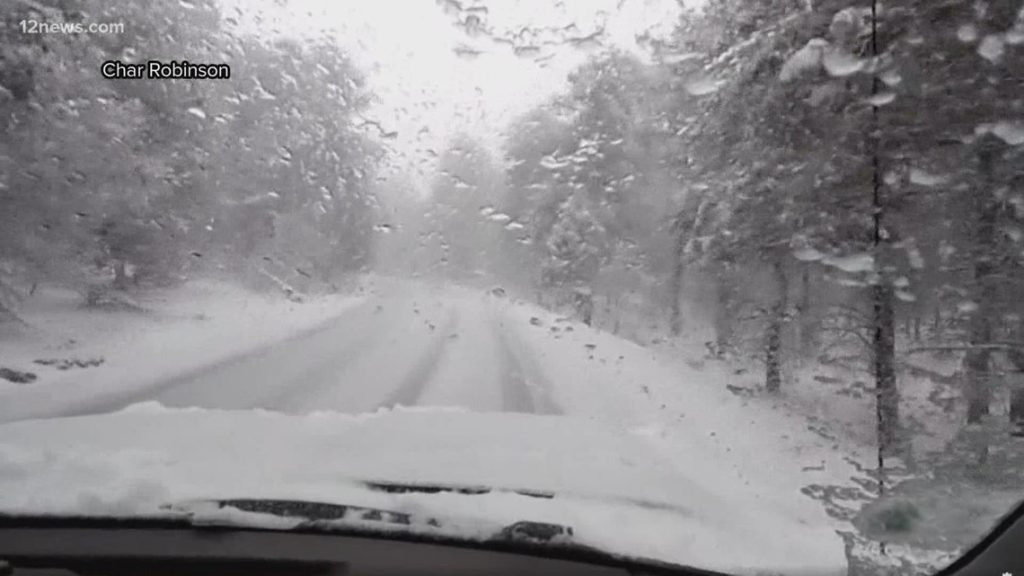Officials say if new snow falls on top of the current snowpack, the layers could loosen and fall off.
FLAGSTAFF, Ariz. — Avalanche it will be possible Officials with the Coconino County Sheriff's Office issued a warning as a winter storm is currently brewing in the interior of northern Arizona.
Northern Arizona's San Francisco Peaks could see up to 4 feet of snow and “large to very large” avalanches possible as a winter weather system moves through the state said the sheriff's office.
“As new snow joins the current snowpack, the lower and middle weaker layers are released, potentially resulting in large to very large avalanches,” the statement said. “This storm is accompanied by strong winds, which could put additional stress on some slopes.”
Officials said a human-caused avalanche was also a “possibility.”
“The Kachina Peaks Avalanche Center advises skiers and riders to avoid all slopes near and above tree line until the danger subsides,” officials said.
Avalanche forecasts can be checked at any time. Kachina Peaks website.
RELATED: Live weather information: Up to 24 inches of snow could fall in some areas, potential for avalanches
Deep snow makes travel dangerous
Avalanches aren't the only danger posed by this storm. Officials said residents should prepare for road closures, as deep snow will make travel on foot and by vehicle difficult.
“Drivers should not be tempted to take alternative routes suggested by navigation apps, especially on roads that are not routinely plowed or patrolled,” Coconino County officials said. “It is generally best to wait for road closures to end in your car or in the city, rather than attempting unknown alternative routes.
Travelers should pack additional supplies and expect longer travel times while the storm passes.
RELATED: Historic storm sends debris into Los Angeles' Hollywood Hills, leaving 1.1 million without power
The situation will deteriorate rapidly later today and into tonight. People should avoid unnecessary travel tonight through Wednesday. #azwx pic.twitter.com/fEwMPRF1be
— NWS Flagstaff (@NWSFlagstaff) February 6, 2024
















